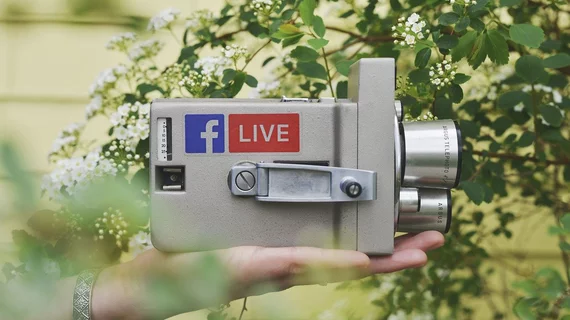How Johns Hopkins uses Facebook Live to instantly push pressing radiology discoveries across the globe
Johns Hopkins Medicine is detailing how it recently used Facebook Live to easily reach tens of thousands of individuals in the field to share knowledge about pressing topics in radiology.
The Baltimore-based institution—named the top school for radiology training in the U.S.—has held two such sessions on the web this year, in January and March. Those focused on the hot topics of patient shielding and the COVID pandemic, respectively, with comments from thought leaders at Hopkins.
Its patient-shielding session alone reached almost 52,000 viewers after 48 hours, in countries that included Saudi Arabia, Sweden and England, experts noted Friday in JACR.
“There is great potential in using Facebook Live for radiology education,” research associate Lilly Kauffman and colleagues at Hopkins wrote May 29. “Because it is free and educators can exert as much or as little effort as they desire, it is a time- and cost-effective way to reach thousands of people within hours.”
Hopkins had already established a Facebook page for its website, CTisus.com, back in 2009, which over the years has accumulated more than 235,000 followers. With imaging education increasingly moving to the web, the school decided to take Facebook Live for a spin, allowing educators to easily broadcast learnings to a global audience in a moment’s notice.
They made their first attempt at live broadcasting on Jan. 15, following the publication of an article in the New York Times, in which a Hopkins radiology expert was quoted about the topic of patient shielding. With little prep, they recruited medical physicist Mahadevappa Mahesh, MD, PhD, to speak and answer live questions the day after the article’s appearance.
Users could continue to watch the 20-minute broadcast after its airing, and within a day the shielding segment had reached almost 30,000 viewers. More than 8,300 stayed on for longer than three seconds, and Hopkins logged 178 reactions and 61 comments that first day.
A second video on COVID-19 aired live March 26 and drew another nearly 26,000 visitors the first day. More than 8,700 stayed on for at least three seconds, with 296 reactions, 58 comments and 87 total shares. The COVID video required a little extra prep work, including a PowerPoint presentation. Elliot Fishman, MD, spent about 25 minutes discussing radiological findings of the virus, and Hopkins’ new reporting template.
Kauffman and colleagues had a positive overall experience with both attempts and encouraged their peers to explore such platforms in the future.
“The field of radiology education might benefit itself and its users by meeting people where they are. Increasingly, that is in the digital world,” the team concluded.

